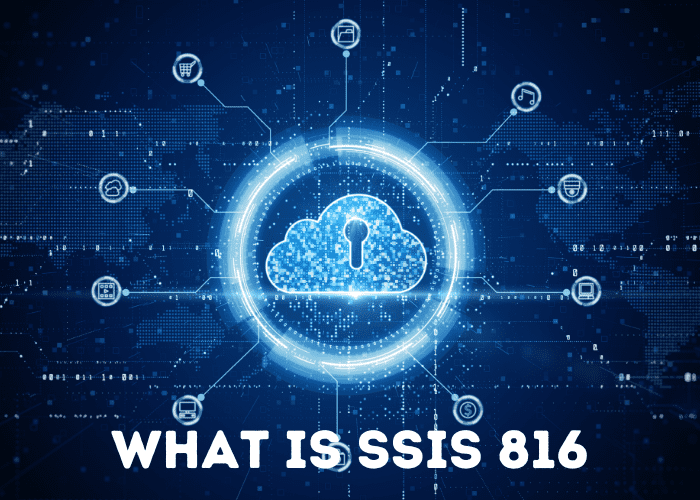Introduction
In the world of data integration and transformation, Microsoft’s SQL Server Integration Services (ssis) has long been a cornerstone. With the release of ssis 816, this tool not only keeps its legacy but also introduces an array of features and modifications that promise to elevate data handling to new heights. Whether you’re a seasoned ssis-816 jav user or a beginner, ssis 816 offers something exciting for everyone.
What is ssis 816?
ssis stands for SQL Server Integration Services, a platform for constructing corporation-level data integration and data transformation solutions. You can use ssis 816 to solve complex business problems through copying or downloading documents, sending e-mail messages in response to activities, updating records warehouses, cleansing and mining information, and managing SQL Server objects and statistics.
Evolution of ssis-816
Since its inception, ssis has evolved significantly. From its initial days as DTS (Data Transformation Services) in SQL Server 2000 to the much more robust and feature-rich version we see today in ssis 816, the journey has been marked by continuous improvement and innovation.
Core Components of ssis 816
Data Flow
- The Data Flow component is the heart of a ssis-816 package, enabling complex ETL operations on data sourced from various locations.
- It allows data transformations through different tasks and components, such as sorting, aggregating, and merging data, as it moves from source to destination.
- The graphical design surface in ssis lets users visually map out and manage the flow of data, enhancing readability and ease of maintenance.
Control Flow
- Control Flow in ssis dictates the order of task execution and defines the workflow of the package. It’s where you orchestrate tasks like executing SQL scripts, sending emails, or running Data Flow tasks.
- Tasks within Control Flow can be made conditional, allowing for complex execution scenarios based on success, failure, or other outcomes of preceding tasks.
- Loops and sequence containers can organize tasks into manageable units or iterate over tasks multiple times, useful for repeating operations on multiple objects.
Event Handlers
Event handlers in ssis 816 jav give you the power to respond to runtime events with custom tasks, making your data integration process more dynamic and responsive.
Parameters
Parameters offer the ability to pass values into your ssis packages at runtime, making your packages more flexible and easier to reuse across different scenarios.
Key Features of ssis 816
- Performance Enhancements
ssis 816 brings with it significant performance enhancements, making data integration faster and more efficient than ever before. It allows the users to do their work efficiently with extra speed.
- Advanced-Data Cleansing
With advanced data cleansing capabilities, ssis-816 jav ensures that the data being processed is accurate, consistent, and reliable. By data cleansing feature, users prefer it, that’s why it is the most demanding technology tool.
- Extended Connectivity
Extended Connectivity in ssis 816 broadens the horizons of data sources and destinations you can work with. Whether it’s connecting to cloud services, tapping into big data platforms, or integrating with various APIs, ssis 816 makes it possible to bring together data from a wider array of sources
ssis 816 in Practice
Deploying ssis Packages
Deploying ssis packages is more straight forward in ssis 816, reducing the time and effort needed to move packages from development into production environments. This means you can get your data solutions up and running faster, with less hassle.
Debugging and Troubleshooting
ssis 816 enhances the debugging and troubleshooting experience, making it simpler to pick out and attach problems on your data procedures. With better equipment and clearer insights into what’s occurring on your applications, you may spend much less time debugging and more time turning in cost.
Use Case Scenarios
ssis 816 is versatile and can be applied to a wide range of data tasks, from data warehousing and migration to reporting and beyond. Its features and capabilities make it suitable for addressing complex data challenges in various scenarios, showcasing its adaptability.
Comparing ssis 816
With Previous Versions
Compared to its predecessors, ssis 816 stands out for its improved performance, richer feature set, and greater reliability. These advancements make it a compelling update for existing ssis users and a strong contender for new users looking for an effective data integration solution.
With Other ETL Tools
When matched up against other ETL tools, ssis-816 holds its ground with its deep integration with SQL Server and other Microsoft technologies, extensive feature set, and scalability. Its ability to handle complex data workflows efficiently makes it a viable choice for businesses invested in the Microsoft ecosystem.
Conclusion
ssis 816 isn’t just an update; it’s a vast leap ahead in the realm of data integration and transformation. With its robust features, improved performance, and remarkable flexibility, ssis 816 is poised to be a critical tool for data experts looking to streamline their data processes and unlock the full potential of their data assets.
FAQs
1. What is the main advantage of using ssis 816 over previous versions?
The main advantage of using ssis 816 over its predecessors lies in its significant performance enhancements, advanced data cleansing capabilities, and extended connectivity options. These improvements make it a more powerful and versatile tool for data integration and transformation tasks.
2. Can ssis-816 jav integrate with cloud-based data sources?
Yes, ssis 816 can integrate with cloud-based data sources. Its extended connectivity features include support for various cloud services, enabling seamless data integration and migration processes between on-premises databases and cloud platforms.
3. How does ssis 816 handle large volumes of data?
ssis 816 handles large volumes of data efficiently through its performance enhancements and optimized data flow components. These improvements ensure quick and reliable processing of vast datasets, making it suitable for enterprise-level data integration tasks.
4. Is ssis 816 suitable for small businesses?
Yes, ssis 816 is suitable for small businesses. Its scalability and flexible deployment options allow small businesses to leverage powerful data integration and transformation capabilities without the need for extensive infrastructure or resources.
5. Can ssis-816 be used for real-time data processing?
ssis 816 can be configured for near real-time data processing scenarios through the use of carefully designed packages and SQL Server features. However, it’s primarily designed for batch processing, so for strict real-time needs, additional components or software may be required.

